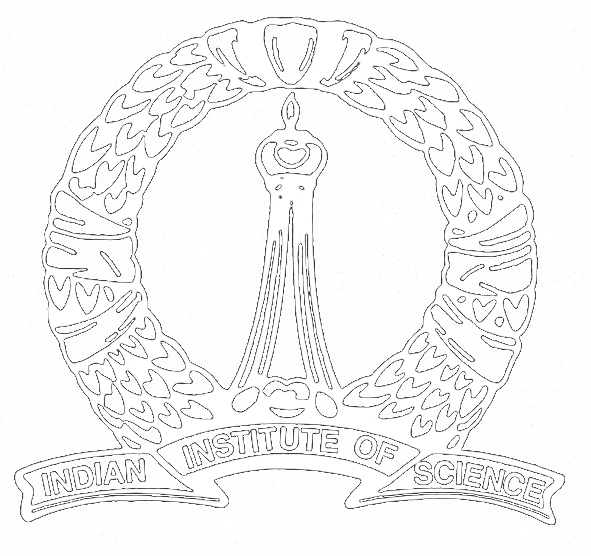APRG Seminar
Title: Pairs of Commuting Contractions
Speaker: Srijan Sarkar (IISc Mathematics)
Date: 21 August 2019
Time: 3:30 pm
Venue: LH-1, Mathematics Department
This talk will be a continuation of my presentation on ‘Factorization of Contractions’, which was held at the in-house symposium this year.
We will start by proving the celebrated theorem of Berger, Coburn and Lebow on pairs of commuting isometries which states that: a pure isometry $V$ on a Hilbert space $\mathcal{H}$ is a product of two commuting isometries $V_1$ and $V_2$ in $\mathcal{B}(\mathcal{H})$ if and only if there exist a Hilbert space $\mathcal{E}$, a unitary $U$ in $\mathcal{B}(\mathcal{E})$ and an orthogonal projection $P$ in $\mathcal{B}(\mathcal{E})$ such that $(V, V_1, V_2)$ and $(M_z, M_{\Phi}, M_{\Psi})$ on $H^2_{\mathcal{E}}(\mathbb{D})$ are unitarily equivalent, where
\begin{equation} \Phi(z)=(P+zP^{\perp})U^* \quad \text{and} \quad \Psi(z)=U(P^{\perp}+zP) \end{equation}
for $z \in \mathbb{D}$ (the unit disc in $\mathbb{C}$).
We shall then proceed to derive a similar characterization for pure contractions. In particular, let $T$ be a pure contraction on a Hilbert space $\mathcal{H}$ and let $P_{\mathcal{Q}} M_z|_{\mathcal{Q}}$ be the Sz.-Nagy and Foias representation of $T$ for some canonical $\mathcal{Q} \subseteq H^2_{\mathcal{D}}(\mathbb{D})$, where $\mathcal{D}$ is a closed subspace of $\mathcal{H}$. We will show that $T = T_1 T_2$, for some commuting contractions $T_1$ and $T_2$ on $\mathcal{H}$, if and only if there exist $\mathcal{B}(\mathcal{D})$-valued polynomials $\varphi$ and $\psi$ of degree $\leq 1$ such that $\mathcal{Q}$ is a joint ($M^*_{\varphi}, M^*_{\psi}$)-invariant subspace and
\begin{equation} P_{\mathcal{Q}} M_z\mid_{\mathcal{Q}} = P_{\mathcal{Q}} M_{\varphi \psi}\mid_{\mathcal{Q}} = P_{\mathcal{Q}} M_{\psi \varphi}\mid_{\mathcal{Q}} \quad \mbox{and} \quad (T_1, T_2) \cong (P_{\mathcal{Q}} M_{\varphi}\mid_{\mathcal{Q}}, P_{\mathcal{Q}} M_{\psi}\mid_{\mathcal{Q}}). \end{equation}
Moreover, there exist a Hilbert space $\mathcal{E}$ and an isometry $V \in \mathcal{B}(\mathcal{D}; \mathcal{E})$ such that
\begin{equation} \varphi(z) = V^* \Phi(z) V \quad \mbox{and} \quad \psi(z) = V^* \Psi(z) V \quad \quad (z \in \mathbb{D}), \end{equation}
where the pair $(\Phi, \Psi)$, as defined above, is the Berger, Coburn and Lebow representation of a pure pair of commuting isometries on $H^2_{\mathcal{E}}(\mathbb{D})$. As an application, we shall obtain a sharper von Neumann inequality for commuting pairs of contractions.
If time permits, then we will look at some of the recent work by other authors in this direction and also try to figure out the challenges that lie in extending this result to a tuple of contractions.
- All seminars.
- Seminars for 2019
